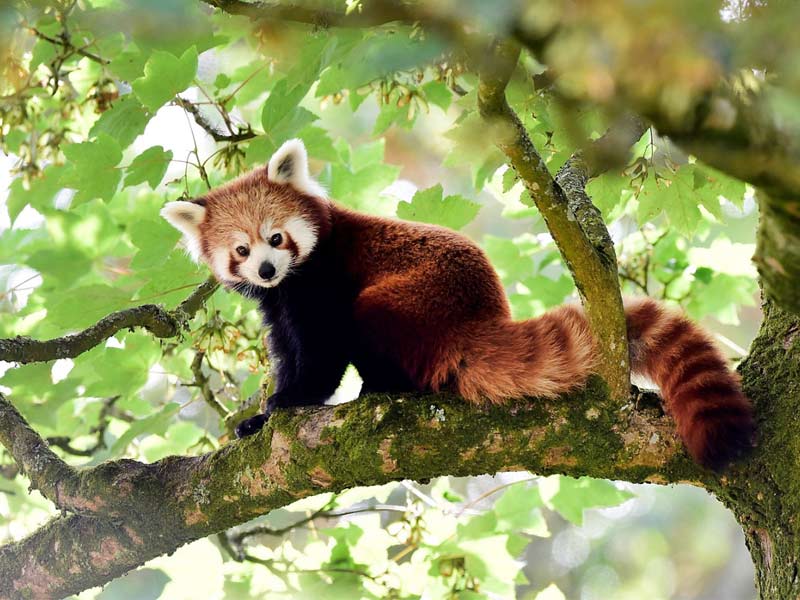Let’s Start a revolution to save the endangered animals in India
The world is full of millions of different species. Just like humans, plants, animals, and insects are an integral part of the ecosystem. The landscape and living conditions on the planet change every few kilometers. Different conditions are suitable to survive for different species. If the population of any species surviving on this planet declines, it creates a great disbalance in the ecosystem. The human race is the most expansionist and aggressive race on this planet. Human activities like setting up industries, cutting forests, and increased pollution have led to hundreds of extinct or endangered animals in India.
India is among the worst affected countries by pollution. Increasing population, large-scale industrial expansion, encroaching into preserved forest regions, and careless behavior have led to several animals and birds getting extinct. There’s only a little we can do about the creatures that have already gone extinct. Apart from this, there are hundreds of species that are placed in the endangered category. Endangered animals are those whose population is declining at an unprecedented rate. If nothing substantial is done for their preservation, time is not far when they will go extinct as well.
We’ve included of the endangered animals in India on this list.
Asiatic Lion:

Also known as the Indian Lion, Asiatic Lion is one of the most magnificent lion species mainly found in India. They are different from African Lions in their build, and most of them are housed at the Gir National Park in Gujarat. The lions once lived in huge numbers from the Middle East to northern India. However, the Indian government and forest authorities have done a commendable job in preserving these lions. Constant efforts have led to a steady increase in the population of Asiatic lions since 2010. As of 2021, India has 674 Asiatic Lions.
Snow Leopard:

Snow Leopard is another endangered animal in India, that mainly live in the mountainous region in Central and South Asia. The large cat is mainly identified by its thick and long fur and long tails. The color of their body varies from smokey grey to yellowish tan. They can be found in several parts of the country. Some prominent places where you can spot Snow Leopards include Hemis National Park, Ladakh, Nanda Devi National Park, Uttarakhand, Dibang Wildlife Sanctuary, Arunachal Pradesh, Kibber Wildlife Sanctuary, and Lahaul Spiti. India has nearly 2,500 Snow Leopards left.
Black Buck:

Also known as Indian Antelope, BlackBuck is an ungulate species mainly found in India and Nepal. Mainly found in grassy plains and light forest regions, the gorgeous antelope is one of the biggest victims of poaching, predation, forest cutting. The expansion of cities has led to the destruction of thousands of acres of forest. Their population declined gradually to 8,000 by 1964. However, constant efforts by the government and locals living in the forest areas have resulted in a significant recovery in their numbers to 25,000.
Red Panda:

As the name suggests, Red Panda is mainly found in the Himalayan region and China. It has been listed as an Endangered species on the IUCN Red List. Also known as a lesser panda or red cat bear, the mammal has been one of the biggest victims of poaching, destruction of forests, and climate change. The population of Red Pandas has declined significantly over the past few years. Indian has nearly 6,000 Red Panda left.
Also Read, 10 beautiful animals, that we lost in Extinction
One Horned Rhinoceros:

Popularly known as the Indian rhinoceros, One-horned rhinoceros is a species of rhinoceros native to the Indian subcontinent. The giant animal is listed as an endangered Animal in India and on the IUCN Red List. Their existence has been restricted to an area of nearly 20,000 sq. km, and it has been one of the key reasons behind a constant decline in the population of these creatures. Mainly found in Assam, the one-horned rhinoceros are killed by poachers for their horns. India has just 3,700 rhinos left.
Lion Tailed Macaque:

Also known as an Old World Monkey, the Lion Tailed Macaque inhabits the Western Ghats of India. Commonly known as Wanderoo, the black-colored monkey is identified by its long tail and silver-white mane, giving a unique appearance to the monkey’s face. Their life expectancy is nearly 20 years. You can spot them at Silent Valley National Park, Kerala, Papanasam, part of the Kalakkad Mundanthurai Tiger Reserve, Tamil Nadu, and Sirsi-Honnavara rainforests. India has just 3,500 of these monkeys.
Bengal Tiger:

The mighty wild cat is one of the most magnificent and fierce creatures on the planet. Known as the Royal Bengal Tiger, these lions are mainly found in India and Bangladesh. They have been a victim of poaching, which has contributed to a decline in their numbers. The Indian government runs a national program to preserve these royal tigers,. Due to constant efforts, their number has increased from over 1,900 in 2010 to over 3,300 in 2018.

























